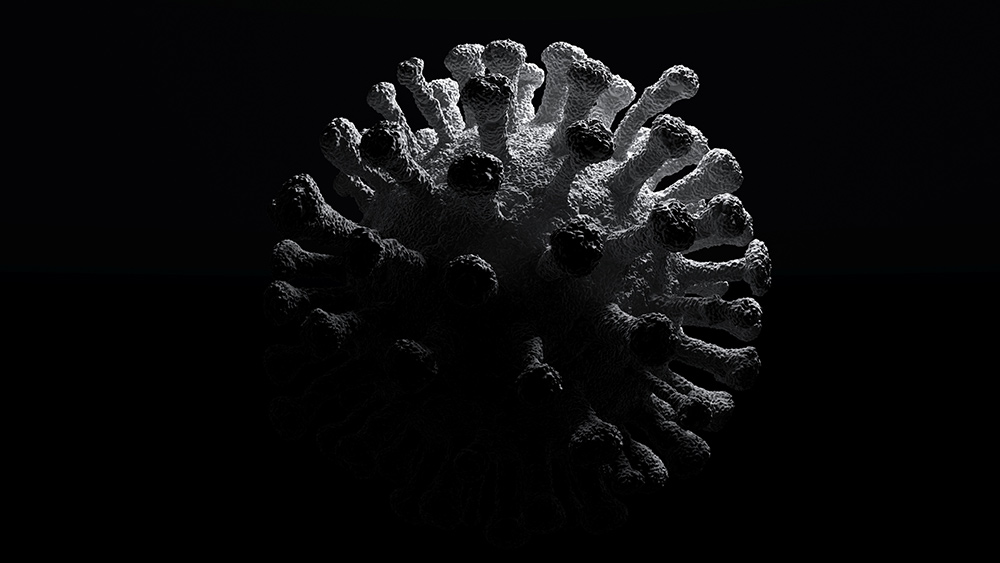
According to researchers at Columbia University Irving Medical Center's Center for Radiological Research, far-UVC light, which has a lower wavelength than DNA-damaging UVA and UVB from the sun, can inactivate 99.9 percent of airborne viral pathogens in the span of 25 minutes at considerably low doses. This makes it a safe and effective disinfectant to use in public areas, where people are likely to catch infectious diseases like COVID-19, which is caused by the Wuhan coronavirus.
The full article was published in the journal Scientific Reports.
Far-UVC vs. UVA, UVB and UVC
Prolonged exposure to UV radiation is a major risk factor for skin cancer. This natural energy is emitted by the sun, but because UV light has a shorter wavelength than visible light, it is invisible to the eyes. Despite this, the damaging effects of UV rays can easily be felt and seen, especially on the skin.
Two types of UV rays are responsible for the skin damage associated with excessive sun exposure. UVA, which has a longer wavelength (320 nm to 400 nm) than UVB, is the type that causes premature skin aging. UVB, whose wavelength ranges from 280 nm to 315 nm, is the type that causes sunburn.
Although UVB doesn't penetrate as deeply as UVA, it can still damage the DNA of cells that make up the outermost layer of the skin. UVA, in contrast, is responsible for the genetic damage that occurs in the innermost layer of the skin, where skin cancers usually develop. UVA also accounts for up to 95 percent of the radiation that reaches the Earth from the Sun.
Another type of UV ray exists, although it is relatively less discussed. UVC, which happens to be the most damaging type of radiation due to being high-energy, only has a wavelength range of 200 nm to 280 nm. But since it is easily filtered by the atmosphere, UVC doesn't reach the Earth's surface, unlike UVA and UVB.
The human body has ample natural protection from UVC, so long as exposure is limited and not consistent. The layer of dead skin that covers most of the human body can absorb UVC completely and prevent it from harming live tissue. However, because UVC is readily absorbed by most organic matter, certain areas with reduced dead skin thickness may sustain extensive DNA damage upon exposure. This can easily lead to severe erythema and squamous cell cancer.
On the other hand, UVC's high absorbability offers a unique advantage. The strong absorption shown by organic molecules like DNA makes UVC a powerful germicide that can destroy not only the genetic material of viruses, but also the reproductive processes of microbial pathogens, such as bacteria and fungi.
In a 2017 study published in Radiation Research, Columbia University researchers discovered that a type of radiation in the UVC band can effectively kill the superbug methicillin-resistant Staphylococcus aureus (MRSA) without causing skin damage in mice. This UV light has a wavelength of 222 nm -- far shorter than that of conventional germicidal lamps (254 nm) -- and was referred to as far-UVC.
Far-UVC can safely get rid of airborne viruses in public spaces
The following year, the same research team led by Dr. David Brenner, a professor of radiation biophysics at Columbia University, found that far-UVC can efficiently inactivate aerosolized viruses. At a low dose of 2?mJ/cm2, the 222-nm UV light altered the surface chemistry of the H1N1 influenza virus, which hampered its ability to infect target cells. The H1N1 virus was responsible for the 2009 influenza pandemic that killed more than half a million people worldwide.
In their new study, Brenner and his team tested far-UVC light against two strains of airborne human coronviruses, namely, alpha HCoV-229E and beta HCoV-OC43. They believe that inactivating viruses within a short time of their production is an effective strategy to limit airborne viral transmissions.
Their experiments revealed that at substantially low doses of 1.7 and 1.2 mJ/cm2, far-UVC inactivated 99.9 percent of aerosolized coronavirus 229E and OC43, respectively. Considering the current regulatory UVC exposure limit is 3 mJ/cm2/hour, the researchers estimate that continuous far-UVC exposure at this rate in occupied public areas will result in about 95 percent viral inactivation in the span of 11 minutes, and 99.9 percent inactivation in 25 minutes.
Although they were not able to test far-UVC against SARS-CoV-2, the coronavirus responsible for the current pandemic, Brenner and his team are confident that far-UVC will be just as effective. After all, human coronaviruses have similar genomic sizes, and far-UVC has a strong absorbance in biological materials, especially those of micrometer or smaller dimensions like bacteria and viruses.
“While staying within current regulatory dose limits, low-dose-rate far-UVC exposure can potentially safely provide a major reduction in the ambient level of airborne coronaviruses in occupied public locations,” the researchers wrote in their report.
When asked how best to use far-UVC, Brenner suggests installing overhead far-UVC lights in public places. This will allow the harmless radiation to continuously kill microbes, including (potentially) the Wuhan coronavirus. (Related: A town in Germany prevented 40% of coronavirus infections by masking up.)
“We don’t see far-UVC light as an alternative to masks and social distancing,” said Brenner. “We see it as a new extra weapon that we can use in the battle against COVID-19.”
Sources include:
Please contact us for more information.






















